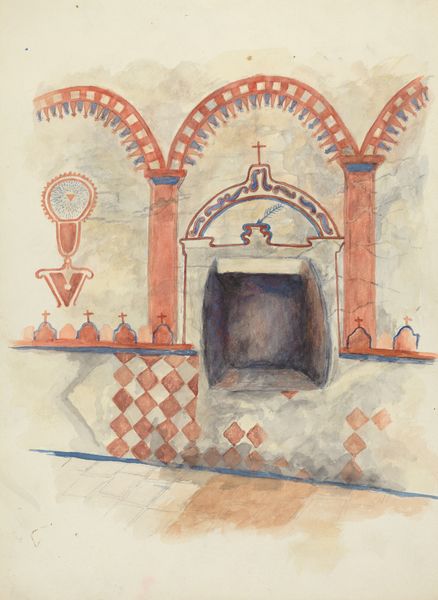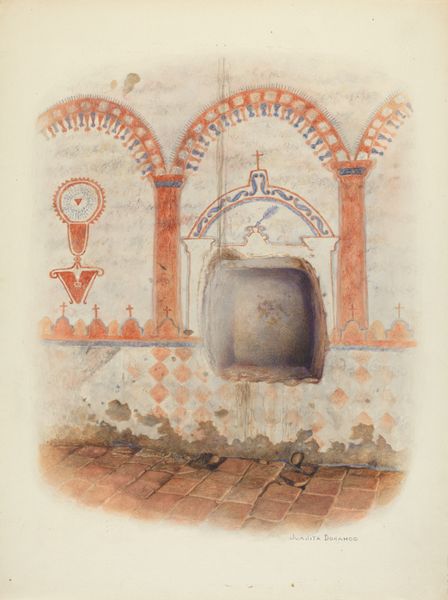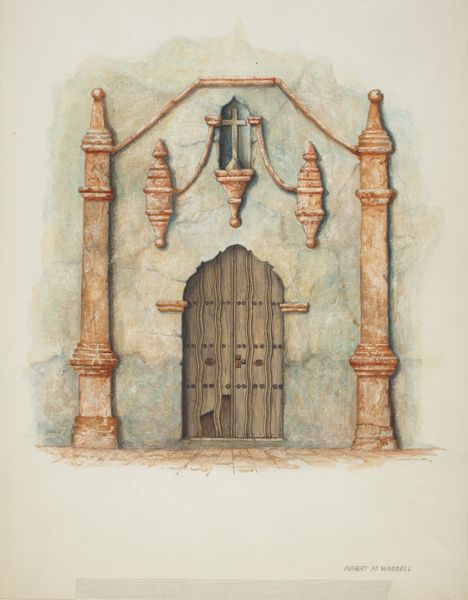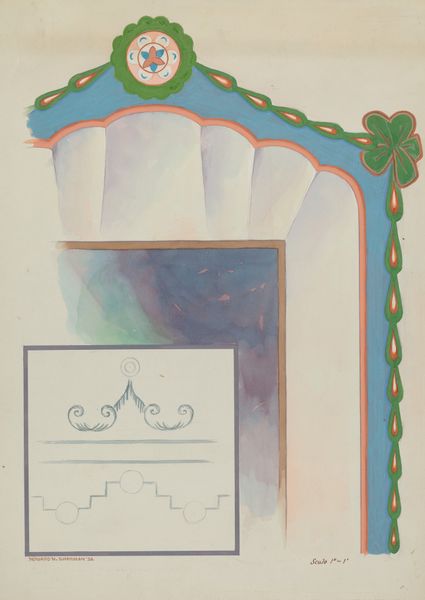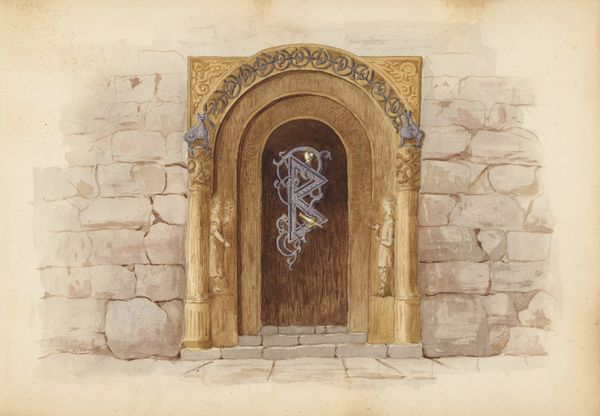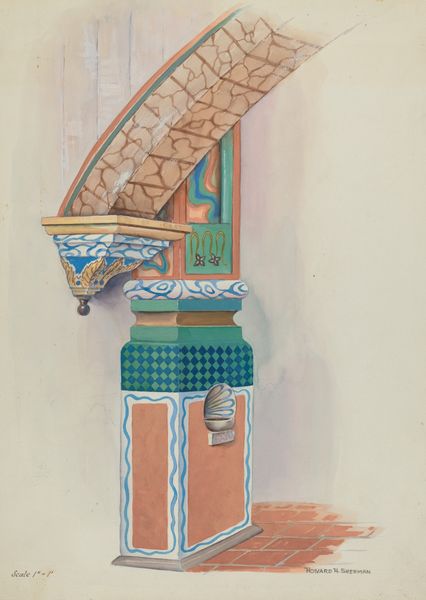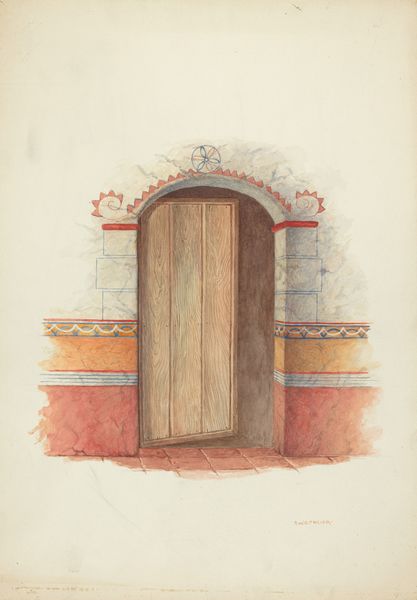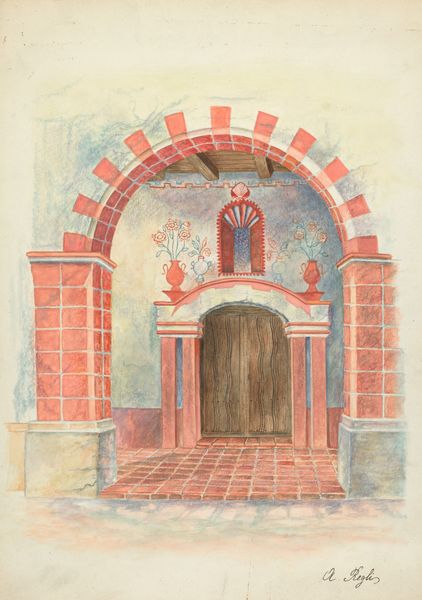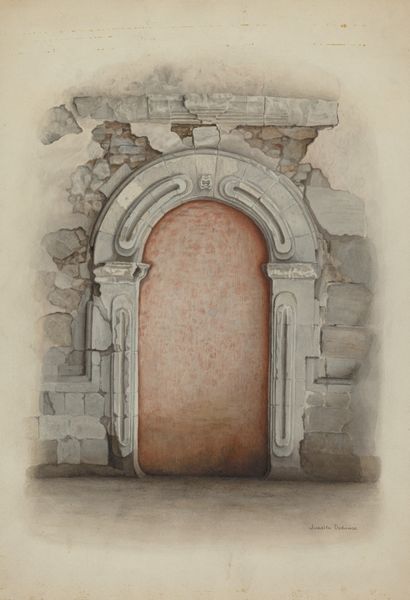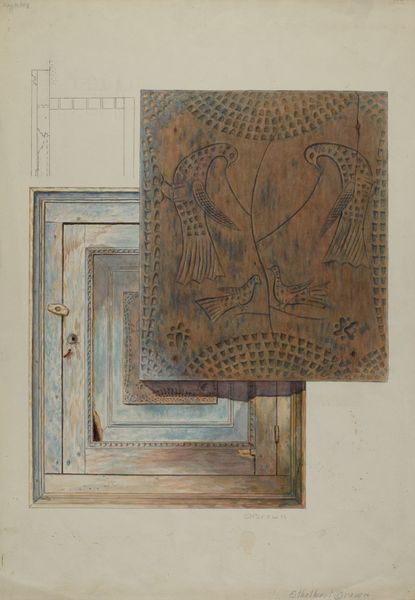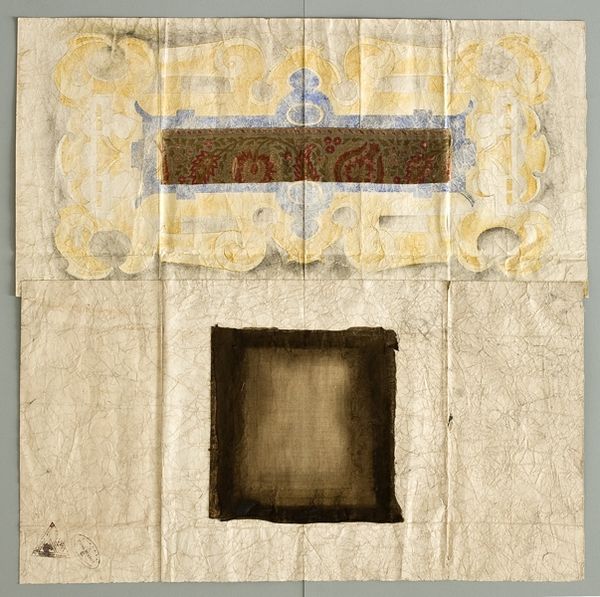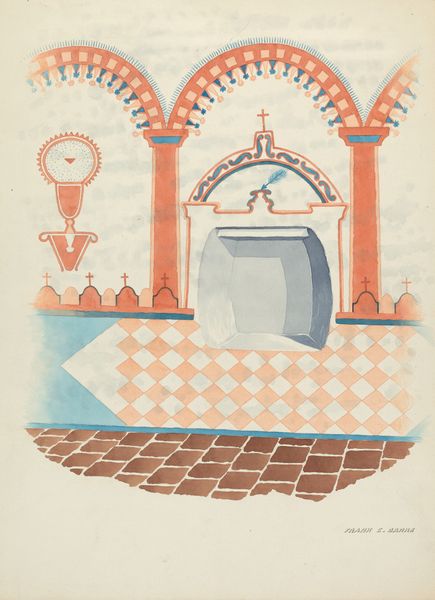
drawing, watercolor, mural
#
drawing
#
watercolor
#
coloured pencil
#
geometric
#
cityscape
#
academic-art
#
mural
#
watercolor
Dimensions: overall: 35.4 x 26.5 cm (13 15/16 x 10 7/16 in.) Original IAD Object: none given
Copyright: National Gallery of Art: CC0 1.0
Curator: This work, dating to 1938, is entitled "Wall Painting and Baptismal Niche" by Harry Mann Waddell. Executed using watercolor and colored pencil, it offers a glimpse into mural art of the period. Editor: It has such a faded, dreamlike quality. The geometry almost feels softened, made forgiving by the watercolor. There’s a distinct sense of reverence. Curator: Indeed. Waddell's approach is academic in its precision, but the softness comes through his artistic choices. Consider the setting, a baptismal niche. Such places held profound symbolic weight. They functioned as the intersection of institutionalized faith and individualized salvation. How do you see this interplay reflected in the painting? Editor: The checkered pattern, which dominates one portion of the wall, reminds me of many religious paintings. Here it seems to emphasize a connection between everyday life and the transformative experience of baptism. I'm drawn to that heavy darkness inside the niche, the contrast feels loaded. It evokes the idea of death and rebirth central to the sacrament. It also makes me think about exclusionary history and who had or didn't have access to the cleansing waters of religion, as much depended on it at the time. Curator: It's important to remember that institutions, including religious ones, are often shaped by power dynamics. We see evidence of similar tensions during that era around the idea of social inclusion. Do you see an influence by the wider social environment of the time, the impact of segregation, for example? Editor: I think the work engages these debates, particularly through its almost washed-out quality, implying a potential effacement of culture as power, privilege, and access continued to be largely restricted. However, the vibrant detailing implies a persistence and pushback in certain social and political areas. It offers a perspective that moves through social reform and access. The details—those pops of color, that tile work—suggest the power of culture itself to speak in a restricted world. Curator: You've opened a fresh consideration of the way in which religious art can exist, operate and engage with sociopolitical issues. Thank you for this insightful reflection. Editor: Thank you. Examining art, particularly something as outwardly straightforward as a baptismal niche, reminds us that sacred spaces can be reflections of social conscience. It has certainly left me with more to consider.
Comments
No comments
Be the first to comment and join the conversation on the ultimate creative platform.
